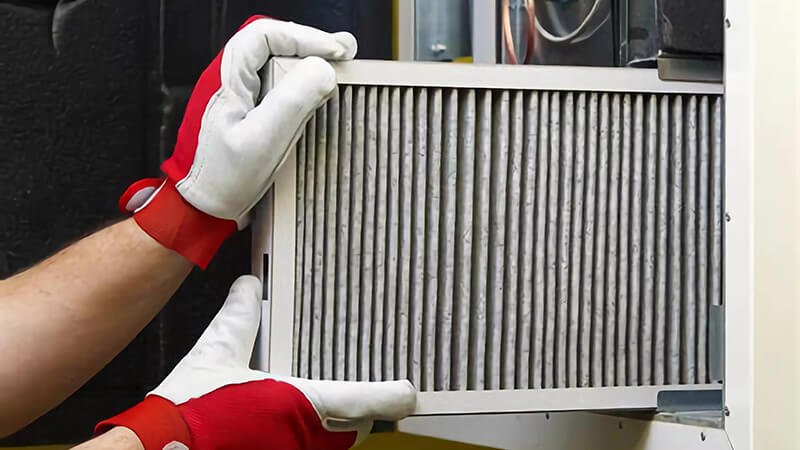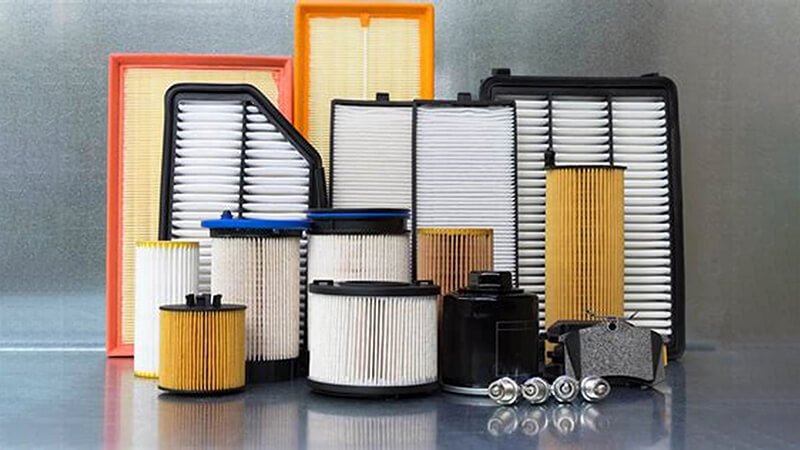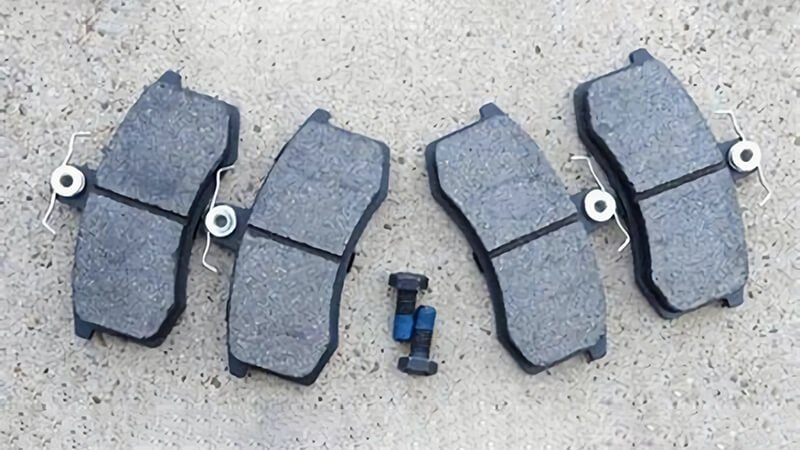I see many drivers sweat through slow, weak AC. The problem looks complex. It feels costly. The real cause is often simple. A dirty air filter blocks airflow. The cabin does not cool. The compressor strains. The fan grows loud. I show a clear fix.
Yes. A dirty air filter can cause poor cooling, weak airflow, foggy windows, and extra noise. It makes the AC work harder and can raise fuel use. Swap the filter first. If the AC still fails, check the blower, the evaporator, and the refrigerant.
I work with fleets and wholesalers. I lead product at Runex Auto. I see the same story in hot months. The AC fades. The driver feels heat and stress. The cause is a clogged filter. I use clear tests. I change the filter. I see instant gains. In the UK last summer, a client had the same issue. We replaced the filter with a Runex cabin filter. The AC came back strong. The driver calmed down. The car felt new again.

How to reset AC after clogged filter?
I know the pain when AC stays weak after a new filter. The cabin feels stale. The fan roars. The vents push little air. You fear a bigger fault. I keep the steps simple. I rule out small issues first. Then I reset and retest.
Replace the clogged cabin filter, clear leaves from the cowl, and vacuum the housing. Then reset the AC: switch the ignition on, set AC off, set vents to face, set fan low, move to high for 30 seconds, then toggle recirculation three times. Start AC on cold. Test airflow.
Why I start with airflow
I start with airflow because AC is just heat transfer plus flow. If air does not pass the evaporator, the cabin stays hot. A clogged cabin filter1 blocks the path. The blower runs hard. The system can ice up. Moisture may build on the evaporator fins. I want a clean path first. I use a fresh Runex cabin filter that meets ISO 11155-1 for efficiency and pressure drop. I use the right size. I check the arrow mark for flow. I seat the filter tight.
Step-by-step reset that works for fleets
- I remove old debris. I clean the filter tray and the cowl. I clear drain holes.
- I install a Runex Premium Cabin Filter2. I choose standard or carbon media by dust level.
- I turn on the ignition. I do not start the engine yet. I set the fan to low. I open face vents. I set external air.
- I step the fan to high for 30 seconds. This clears loose dust. I toggle recirculation on and off three times. This resets blend and recirc doors on many cars.
- I switch AC on. I set the coldest setting. I keep recirculation on. I let it run for 2 to 3 minutes. I listen for flap moves.
- I measure vent temperature and airflow3 with a small anemometer. I note the baseline.
Why Runex filters help with resets
Our filters use low-resistance media4. We design the pleat count to balance dust load and airflow. We test pressure drop at common face velocities. The fan sees less strain. The evaporator gets even air. The reset sticks better. The cabin cools faster. The fan noise drops.
| Step | Action | Why it matters | Runex tip |
|---|---|---|---|
| 1 | Clean cowl and tray | Removes debris that blocks intake | Use a soft brush |
| 2 | Install new filter | Restores airflow and filter function | Check flow arrow |
| 3 | Fan low → high | Clears dust, resets doors on some cars | Listen for flap clicks |
| 4 | Toggle recirc 3x | Helps blend door find limits | Do it slowly |
| 5 | AC on cold | Tests max cooling with known settings | Measure vent temp |
| 6 | Log readings | Baseline for future checks | Keep a simple sheet |
If the reset fails, I scan for codes in HVAC. I check blend door actuators. I check cabin temp sensor. I look for ice on the evaporator. The reset is still worth it. It is fast. It is low cost. It fixes many cases.

Why is my AC not working after a dirty filter?
I feel the worry when AC still fails after a new filter. You think the compressor died. You fear a big bill. I slow down. I run simple checks. I use facts. Most issues link back to airflow and sensors. Some link to icing or a weak blower.
If AC still fails after a dirty filter, check four points: blower speed, evaporator icing, blend door motion, and refrigerant level. A clogged filter can overheat the blower, ice the evaporator, and confuse sensors. Fix airflow first, then test electrical and pressures.
How a clogged filter causes other faults
- Blower strain5: High static pressure heats the motor. The fuse or resistor can fail. The fan then runs only on high, or not at all.
- Icing6: Low airflow can drop evaporator temperature below freezing. Ice blocks the core. Airflow falls to near zero. When ice melts, water drips and fog comes back.
- Sensor errors: Cabin temp and sun load sensors see wrong data with weak flow. The control logic may trim cooling too early.
- Blend door stress7: Stuck debris can jam or slow the recirc or blend door. The motor current rises. The controller may stop movement.
My field checklist for post-filter AC failures
I share the same list with buyers at Carlson Auto and other partners:
- I test blower current draw on each speed. I compare to spec. A motor that overheated can draw high current or none.
- I check evaporator temp with a probe. If it sits near 0°C and airflow is low, there is ice. I shut AC off, keep fan on high, and melt the ice.
- I run a self-test on HVAC if the car supports it. I listen for actuator moves. I read codes for stuck doors.
- I measure low and high side pressures. Low refrigerant will show low suction and low discharge. I do not vent refrigerant. I handle it with care.
- I inspect the pollen screen under the cowl. This screen can clog before the cabin filter.
Why Runex design helps avoid secondary failures
Runex cabin filters8 keep a low pressure drop as dust loads. We use a stable pleat geometry that resists collapse. We add a rigid frame so the filter does not bow and leak. This keeps airflow more constant between services. The blower stays cooler. The evaporator gets steady air. I see fewer icing calls with our media compared to flat, low-pleat filters.
| Symptom | Likely cause after dirty filter | Quick test | Fix |
|---|---|---|---|
| Fan only works on high | Resistor pack failed from heat | Check voltage on each speed | Replace resistor and filter |
| Air starts cold, then fades | Evaporator icing | Feel suction line; watch frost | Defrost, fix airflow |
| No air change with temp knob | Blend door stuck | Run HVAC self-test | Repair actuator |
| Hiss, poor cooling | Low refrigerant | Check pressures | Leak test and recharge |
If you run a fleet, I advise a paired service: replace the cabin filter and inspect the blower resistor at the same visit. It costs little time. It avoids repeat work.

Can I clean an air filter instead of replacing it?
I get this question a lot. You want to save cost. You want to be green. I respect that. I test both paths. I measure airflow before and after cleaning. I check dust leaks. I check media fibers under a microscope. The results are clear.
You can shake or vacuum a cabin filter, but you will not restore the original airflow or filtration. Water or air blasting can damage the media. I replace the cabin filter. I clean the housing. I use a fresh Runex filter for stable airflow and low noise.
What cleaning really does
- Light tapping removes large debris. Fine dust remains deep in the pleats. Pressure drop stays high.
- Vacuuming helps a bit, but it pulls fibers. It opens pores unevenly. This can raise dust bypass. The cabin can smell worse.
- Water cleaning warps paper media. Many filters use resin-treated cellulose or composite. Water breaks the bond. The pleats sag. The gasket can swell.
I ran a simple test with a UK client. We measured face velocity at a set fan speed. We tested three filters: a new Runex carbon filter9, the same model after 12,000 km, and that used filter after a vacuum clean. The new filter showed the best airflow and low smell. The used filter showed a 25% drop in airflow. The vacuum clean recovered only 5%. Noise rose. Dust counts rose. The cabin felt stuffy.
Why replacement wins on cost
When I model cost, I use total cost per kilometer and per driver hour. A clogged filter10 makes the blower draw more power. It adds fuel use in ICE cars. It adds energy use in EVs. It can shorten blower life. The payback for a new filter is short.
| Path | Upfront cost | Airflow vs new | Filtration vs new | Risk | My advice |
|---|---|---|---|---|---|
| Shake or vacuum | Very low | -15% to -25% | -10% to -30% | Fiber damage, leak | Do only as a temporary step |
| Wash with water | Low | Unstable | Poor | Media collapse | Do not do it |
| Replace with Runex | Moderate | 95%-100% | 95%-100% | Low | Best for comfort and parts life |
What makes a good replacement filter
Runex cabin filters use:
- A high-pleat count11 for dust holding.
- Low-resistance media for strong airflow.
- A rigid frame to keep shape under load.
- For carbon versions, a uniform carbon layer for odor control without big pressure drop.
- Tight gaskets to stop bypass.
I pick the right filter by VIN or OE number. I confirm dimensions. I check the flow arrow. I seat it well. I log the change date. I set a reminder for the next service. Cleaning feels quick, but it does not solve the real problem. Replacement is simple. It is safe. It keeps the AC strong.

How often do you need to replace a car AC filter?
I get this timing question from every buyer. The manual gives a wide range. The road gives a different answer. I use data. I track dust load, city miles, and driver comfort. I set a clear schedule. I keep it simple for teams.
I replace the cabin air filter every 12,000–15,000 km or 12 months, sooner in dusty cities or during pollen season. Taxis and delivery cars need 6–9 months. If airflow drops, windows fog, or odors stay, I replace now. I pick a Runex filter matched to the route.
What drives the interval
- Environment: City smog and pollen load the filter fast. Construction zones add fine dust. Rural roads with clean air load slower.
- Duty cycle12: Ride-share and delivery cars cycle doors and recirculation often. They load filters faster.
- Climate: Humid areas grow odor and biofilm on filters sooner.
- Media type: Carbon filters13 may saturate with odors before dust limits airflow.
I run a simple rule for fleets. I schedule an inspection every 10,000 km. I measure fan speed and vent velocity. I swap filters at 12,000–15,000 km unless readings stay strong. I always change before peak summer and before winter fog season. Drivers feel the difference. Complaints drop.
Why Runex helps with longer, safer intervals
We design for a stable pressure drop curve. The pleats stay open. The media loads dust deep in the fibers. The carbon is bonded so it does not shed. This keeps airflow stable for more miles. It reduces blower heat. It holds odor longer. It lets you plan service.
| Use case | Environment | Suggested interval | Filter type | Notes |
|---|---|---|---|---|
| Commuter | Mixed urban/suburban | 12–15k km or 12 months | Standard or Carbon | Choose carbon for odor |
| Taxi / Ride-share | Dense urban | 6–9 months | Carbon | Add mid-season check |
| Delivery fleet | Stop-and-go, dusty docks | 6–9 months | Standard high-pleat | Keep spare stock |
| Rural | Clean air, light dust | 15–20k km | Standard | Inspect at 10k km |
| Allergy season | High pollen | Before season + mid-season | Carbon | Watch pressure drop |
A short story on timing
A UK partner ran 120 cars in London. AC complaints spiked each June. We shifted to a two-touch plan: replace in April, inspect in August. We used Runex carbon filters in the city cars and standard filters outside the ring. Complaints fell by 60%. Blower failures fell by 30% year over year. The cost per car went down because repeat visits dropped.
I keep the schedule visible. I tie it to oil change or tire rotation. I add it to the PDI for used cars. A clear rule saves time. It keeps drivers cool and calm.

Conclusion
A dirty cabin air filter14 can make the AC weak, loud, and wasteful. I start with airflow, because it fixes many cases fast. I replace, not clean, because the media loses shape and flow. I set a simple schedule by route and season. I use Runex filters because they hold dust well and keep pressure drop low. I see fewer blower failures. I hear fewer complaints. The cabin stays cool. The team stays on time.
-
Understand the consequences of a clogged cabin filter and how it affects your vehicle's air conditioning system. ↩
-
Explore how Runex filters enhance airflow and efficiency, ensuring a cleaner cabin environment. ↩
-
Discover techniques for accurately measuring vent temperature and airflow to optimize HVAC performance. ↩
-
Learn about low-resistance media and its impact on airflow and system performance in HVAC systems. ↩
-
Understanding blower strain can help you prevent motor failures and ensure efficient HVAC operation. ↩
-
Exploring icing effects can help you maintain optimal airflow and prevent costly repairs in your HVAC system. ↩
-
Learning about blend door stress can aid in diagnosing airflow issues and improving your HVAC system's efficiency. ↩
-
Discover how Runex cabin filters can enhance your HVAC system's performance and reduce maintenance needs. ↩
-
Explore the advantages of Runex carbon filters for superior airflow and odor control, ensuring a comfortable cabin environment. ↩
-
Learn how a clogged filter impacts fuel efficiency and blower life, and why timely replacement is crucial for optimal performance. ↩
-
Discover the significance of high-pleat count in cabin filters for enhanced dust holding and airflow efficiency. ↩
-
Understanding duty cycles can help optimize filter maintenance schedules, ensuring better air quality and vehicle performance. ↩
-
Exploring the benefits of carbon filters can enhance your knowledge of air quality solutions for vehicles, leading to healthier driving environments. ↩
-
Finding the best auto air filters from Runex. ↩













